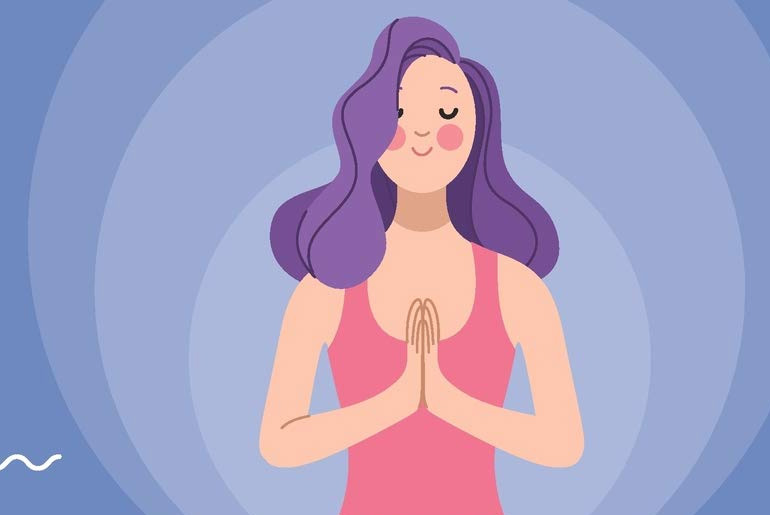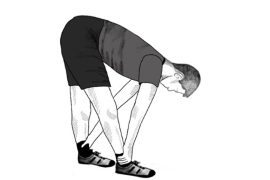Swana Pranayama, also known as Dog Breath Pranayama, is a yogic breathing practice that involves rapid and forceful exhalations through the nose while keeping the inhalations passive. It’s named after the sound and rhythm resembling a dog panting. This pranayama technique is believed to help cleanse the lungs by expelling stale air and toxins, thereby increasing oxygenation and invigorating the body. Swana Pranayama is often practiced in yoga routines to enhance energy levels, clear the mind, and promote a sense of vitality. It’s recommended to learn and practice Swana Pranayama under the guidance of a qualified yoga instructor to ensure proper technique and safety.
Practice:
Position: Sit comfortably with your spine erect and palms resting on your knees.
Breathing Technique:
- Stick your tongue out slightly.
- Inhale forcefully through the mouth, filling your lungs deeply.
- Exhale forcefully through the mouth, expelling air with a audible sound, mimicking a panting dog.
- Repeat this cycle for 11 rounds in each set.
- Perform 3 sets of 11 rounds each.
Preserving Lung Health:
Our lungs are vital organs that facilitate the exchange of gases essential for our body’s functioning. When we breathe in, our lungs absorb oxygen from the air, which is then transported into the bloodstream to nourish cells and organs. Simultaneously, carbon dioxide, produced as a byproduct of metabolism, is carried back to the lungs and exhaled out of the body. This exchange occurs in millions of alveoli, tiny air sacs that provide an extensive surface area for efficient gas transfer. Despite their efficiency, our lungs are constantly exposed to pollutants, allergens, and irritants present in the air, which can accumulate in the airways and alveoli, potentially leading to respiratory issues. Maintaining good respiratory hygiene and minimizing exposure to harmful substances are crucial for preserving lung health and ensuring optimal gas exchange throughout life.
Stale air:
“Stale air” typically refers to the residual volume of air that remains in the lungs after a normal exhalation. This air may contain a higher concentration of carbon dioxide and lower levels of oxygen compared to the fresh air we inhale. It accumulates in the lungs because the lungs never completely empty during normal breathing; some air always remains in the alveoli and airways. This residual air, often termed as “dead space,” serves as a buffer to maintain lung function and helps prevent the collapse of alveoli. Efficient breathing techniques and occasional deep breathing exercises can help refresh this air and improve oxygenation in the lungs.
Potential Benefits:
- Enhanced Lung Capacity: The deep inhalations and forceful exhalations can expand lung capacity, helping to maximize oxygen intake and potentially improving overall respiratory function.
- Improved Mucus Clearance: The vigorous breathing movements can help mobilize and expel mucus from the airways. This is particularly beneficial in environments with poor air quality where pollutants and irritants may accumulate in the respiratory tract.
- Stress Reduction: Like other deep breathing exercises, Swana Pranayama activates the parasympathetic nervous system, promoting relaxation and reducing stress levels. This response can be beneficial in counteracting the physiological effects of stress on respiratory health.
- Mental Clarity and Energy Boost: Practicing Swana Pranayama in a rhythmic manner is believed to enhance mental clarity, reduce anxiety, and provide a natural energy boost. This can be especially valuable in polluted environments where mental fatigue and stress are common.
Swana Pranayama, or dog breathing, is advocated for its potential benefits on respiratory health and overall wellbeing, according to proponents like yoga guru Dr. Mickey Mehta. Here’s a summary of its purported benefits and considerations:
Scientific Considerations:
While specific scientific research on Swana Pranayama itself is limited, studies on deep breathing techniques in general suggest potential benefits for respiratory health. Deep breathing can help in improving oxygen uptake, enhancing respiratory muscle function, and supporting relaxation responses that benefit overall wellbeing.
Practical Considerations:
- Complementary Practice: Swana Pranayama should be seen as a complementary practice to conventional medical treatments for respiratory conditions. It should not be used as a replacement for prescribed medications or therapies.
- Consultation: Individuals with underlying lung issues or any medical concerns should consult their doctor before attempting Swana Pranayama. This precaution ensures that the practice is safe and appropriate for their specific health needs.
- Consideration of Medical Conditions: The forceful exhalations involved in Swana Pranayama may not be suitable for everyone, particularly those with conditions such as hypertension, cardiovascular issues, or respiratory disorders. Personalized guidance from a healthcare professional can help assess suitability and ensure safety.
By approaching Swana Pranayama with careful consideration and medical guidance, individuals can potentially benefit from its respiratory and stress-reducing effects while prioritizing their overall health and wellbeing.
Conclusion:
Swana Pranayama offers a natural approach to enhancing respiratory health and promoting overall wellbeing through deep breathing and stress reduction techniques. While the exact physiological mechanisms and specific benefits of Swana Pranayama require further scientific exploration, its potential to improve lung capacity, reduce stress, and enhance mental clarity make it a promising practice for those interested in holistic respiratory care. Incorporating it into a balanced wellness routine, alongside medical advice as needed, can help individuals derive potential benefits while promoting overall health and vitality.
Disclaimer:
The information contained in this article is for educational and informational purposes only and is not intended as a health advice. We would ask you to consult a qualified professional or medical expert to gain additional knowledge before you choose to consume any product or perform any exercise.








